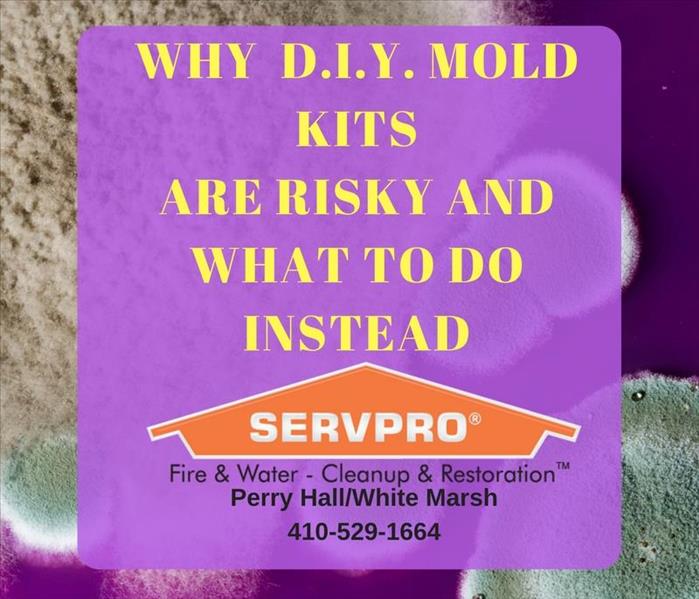Why DIY Mold Kits are Risky
10/14/2016 (Permalink)
 Call SERVPRO of Perry Hall/White Marsh for all of your mold concerns. We can refer you to a certified environmental hygienist to perform the labwork
Call SERVPRO of Perry Hall/White Marsh for all of your mold concerns. We can refer you to a certified environmental hygienist to perform the labwork
Why Do-it-yourself Mold Testing Kits are Useless
If you look on the internet, there are scores of DIY mold test kits. Before you invest in one of these kits, here are things you ought to know about Mold:
Mold:
- Mold is everywhere, and every single house has some form of “mold”.
- There are Mold kits only tell you if your home has mold, but often provides false negatives and positives. It also does not tell you what kind of mold or how to kill it.
A true mold test can only be conducted by a Professional Environmental testing company; they determine the type of mold, the source of the moisture, and how to kill the mold at the core. They create a protocol, which can be read by an IICRC professional (like us!). It’s best to use a testing company that does not do cleaning themselves, because their assessment will be unbiased.
- Mold is more often hidden, sometimes under the floor or in the walls, or in your air ducts
Where the mold is located, often dictates where the moisture is affecting the building
- Untreated water damage may result in mold growth within 24-48 hours of the event
Wood, insulation, fiberglass, carpet and other organic substances become a thriving environment for mold once there is moisture present for more than 24 hours. After a week, it is almost guaranteed.
Free estimates or removing mold yourself cost homeowners more in the long run
Be wary of companies who advertise free mold testing: free mold tests are often offered by people who are uncertified or inexperienced and if they do the mold testing themselves, they are using these kits mentioned above. Unless they are a certified Environmental Hygienist and have a PHD in microbiology, they do not have the knowledge or resources to truly diagnose the mold condition in your home.
- The source of the mold is never addressed, so the problem is reoccurring.
- They use the “self-test” kits mentioned above instead of environmental testing with diagnostics
- Remove only topical mold instead of killing it at the source
- They often remove more walls and floors than needed which increases the price to rebuild.
- They demo not enough, or not the right materials which brings the mold back.
This means you have to pay to have it removed again, and have more sanitation and demolition performed, which increases the price to rebuild and replace tremendously.
What you should do instead
Having mold can be scary, especially if anyone in your home is prone to getting sick (people with asthma, low immune systems, allergies, babies and the elderly). We recommend the following course of action if you need to have mold removed from your home.
- Measure the area affected and check for moisture
- Call your insurance company, ask about:
- If you are covered for mold
- What is your deductible
- What is your coverage
- Ask for a company that they approve of for mold mitigation (Chances are, it’s us because we are approved by all insurance companies as are our price lists).
- If your insurance company say you can use anyone – or if you are not going through insurance then look for someone who is certified in
- IICRC, Water Restoration Technician
- IICRC, Mold restoration
- IICRC, Applied Structural Drying
- Lead certified (requirement in the state of Maryland
Now that you’re armed with knowledge, it’s time to start making some calls.
Now that you know your coverage, how much visible mold there is in your home, and whom your insurance company approves as mold remediation specialists. It’s time to start making some calls.




 24/7 Emergency Service
24/7 Emergency Service